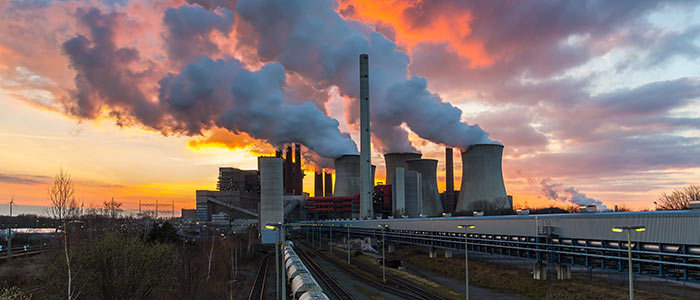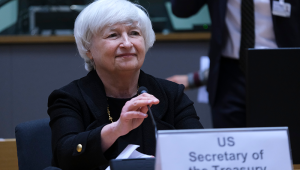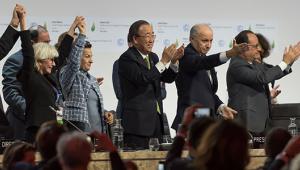Web_GreenhouseGasses_shutterstock_314808188.jpg

Greenhouse gas emissions
The enactment of the Paris Accord, negotiated at the annual high-level climate conference, has been celebrated as a historic day in the world’s efforts to halt catastrophic global warming.
Nations had been trying to reach a global agreement for years before descending on Paris for COP21 last year, and had suffered a disheartening setback in 2009 when negotiations fell apart at the much-hyped COP15 in Copenhagen, where it was widely expected an agreement would be forged.
A similar sense of urgency was imbued in last year’s conference and, to the surprise of some, continued in the months that followed. The agreement required 55 countries representing 55% of global emissions to ratify the agreement before it could come into force – that had happened by early October.
“At a time of record heat, member states embraced this new global agreement in record time,” said United Nations secretary general Ban Ki-Moon today. “This is a momentous day for all of us.”
Governments that have ratified the accord include some of the world’s biggest emitters, including the US, China, India and the EU.
They are now legally bound to a commitment to prevent global warming from rising to more than 2°C above pre-industrial levels – the point at which climate change will become both catastrophic and irreversible, according to climate scientists.
As part of COP21 last year, countries around the world submitted national plans detailing how they would reduce or contain emissions in the coming years.
However, the UN Environment Programme delivered a stark warning earlier this week: current emissions reduction commitments will result in a temperature rise of 3°C – a far cry from the legally enshrined 2°C, and even further from the aspirational target of 1.5°C.
The UNEP’s report found that, without a dramatic increase in efforts, emissions are likely to reach between 54 and 56 gigatonnes of carbon dioxide per year by 2030. It is thought warming will exceed 2°C when emissions hit 42 gigatonnes.
Asad Rehman, international climate campaigner at Friends of the Earth, said this “cannot be ignored – tougher action on climate change is urgently needed to prevent the world speeding towards catastrophe”.
“Governments are drinking in the last chance saloon if the lofty goals of the Paris Agreement are to be met,” he continued. “Failure to act will not only result in more killer droughts, storms and misery – it will also hurtle us towards a future where food, water and a safe home will be a luxury for the few.”
The past year has been characterised by unusually warm and erratic weather due to a combination of human-caused climate change and a super strong El Niño weather phenomenon, which increase temperature.
Around the world, numerous temperature records were exceeded. Droughts destroyed crops and killed livestock, hit economies and left millions of people without food. Meanwhile, floods and powerful storms battered other areas.
“We remain in a race against time,” said Ban at the UN. “Now is the time to strengthen global resolve, do what science demands and seize the opportunity to build a safer, more sustainable world for all.
“We are the first generation to really feel the effects of climate change – and the last that can prevent its worst consequences.”
World leaders will head to Morocco next week for this year’s annual climate meeting, where talks will be dominated by how to implement the agreement and achieve its ambitious targets.













